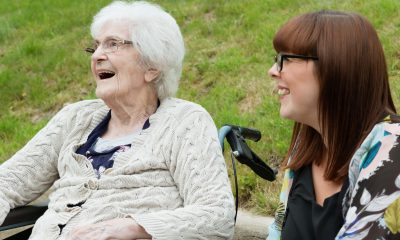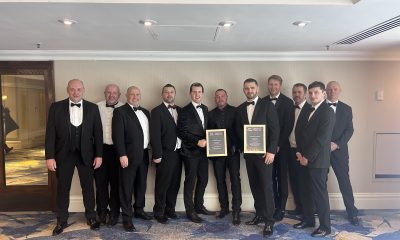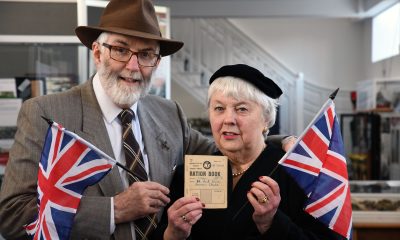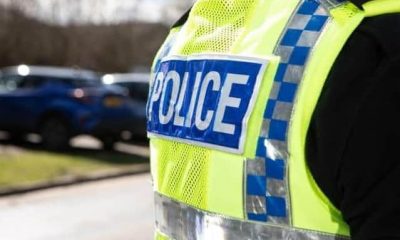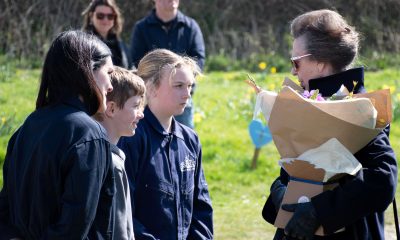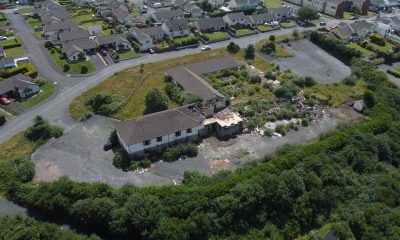News
Pembroke Castle excavation completed

THE TWO WEEK archaeological excavation of Pembroke Castle has finished, with much information and material gathered to be analysed.
Dyfed Archaeological Trust, funded by the Castle Studies Trust, started the excavation on September 3, the first at the site for over 70 years. The excavations and topographic survey aimed to further advance the understanding of one of Wales’ and the UK’s most iconic castles.
The large outer ward has been an empty space since at least the eighteenth century, yet aerial photographs in 2013 revealed parch marks detailing the outline of a possible late medieval double-winged hall house. This was further confirmed by geophysical surveys carried out by Dyfed Archaeological Trust, funded by the Castle Studies Trust, in 2016. Such buildings are unusual in castles, particularly in the outer ward, generally associated with more lowly structures. This may suggest that the ward had been ‘gentrified’ matching historical accounts which place the birth of Henry Tudor in the outer ward: it may have occurred within this very building. It is thought more likely that he was born in what was a modern residence for the time, than in a guard tower on the castle walls.
Under the guidance of well-known castle expert Neil Ludlow, Dyfed Archaeological Trust excavated two trenches to understand more about the form, date, context and function of the remains. Additionally, they carried out a topographic survey to make a detailed record of the layout of the castle.
Neil Ludlow said prior to the excavation: “The geophysical survey carried out in Pembroke Castle, in 2016, funded by the Castle Studies Trust, showed a large, winged building that resembles, in plan, a late-medieval manor house. This is an unusual find within a castle, and has additional significance at Pembroke as the possible birthplace of King Henry VII.
“But this is still guesswork, as nothing else about the building is known. All we really know is that it was excavated in the 1930s without records. Thanks to the support of the Castle Studies Trust, some of these questions will be answered as well as learning more about later medieval high status living.”
Pembroke Castle stands on a site that has been occupied since at least the Roman period. Norman lords founded the first traditional castle there in the 11th century. Henry Tudor was born at Pembroke Castle on January 28 1457. On August 22 1485, Henry seized the English crown, defeating King Richard III at the Battle of Bosworth Field, in the culmination of the Wars of the Roses. He was the last king of England to win his throne on the field of battle, and was crowned Henry VII, first monarch of the House of Tudor.
On the first day of the excavation, a possible wall was quickly made visible in trench one, and trench two revealed a former path surface through the castle grounds and the suggestion of an outer wall. Bone, pottery, brick and tile were found, most from the early 20th century but with some late medieval and post medieval material as well.
The second day saw a second wall revealed close to the east, yet the walls appeared too close together to be associated with the walls seen on the parch marks. Large areas of mortared stone patches were revealed to the west, suggesting walls, and the outer wall of the building in trench two started to become exposed as well. A large amount of oyster shell was collected from the site as well as more pottery and bone.
On the third day, the full width of the wall in trench two was made visible at its western end, at roughly one metre wide, suggesting a substantial structure. In trench one the two walls located close together were thought to represent the cess pit.
The fourth day brought wind and rain, but did not deter progress, with more backfill being removed from both trenches to reveal the surviving walls of the structure. Day five saw good progress, removing almost all of the remaining backfill from trench one to reveal a rubble collapse layer – pre-dating the 1930s excavations. The large mass of masonry is thought to be a possible curving stair, whilst the top of the large wall in trench two was fully exposed.
The sixth day saw further poor weather, and so the focus was on washing and sorting the cleaned finds for bagging up. By the afternoon the weather improved somewhat and the team were able to start the removal of layers of building collapse within the trenches.
Members of the Castle Studies Trust who are funding the investigation visited the site on day seven to check on progress. Work continued in trench one revealing an area of potential bedrock within the possible small room at its eastern end. Collapse material has been removed from trench two to reveal a spread of mortar and slate, potentially a collapsed roof within the structure.
The eighth day saw a sample excavation of the small room in trench one completed, exposing more of a large outcrop of limestone bedrock in its base. Cadw gave permission to slightly extend the trenches and this was started in the afternoon.
The ninth day saw trench two extended to expose the return of the large wall in the northwestern corner of the building, which again appears to be a substantial wall, suggesting a tall building. The extension in trench one was also continued, but no continuation of any walls were seen, although a deposit of rubbish was revealed containing large quantities of roofing slate, oyster shell, bone and quite a few pieces of glazed tile.
The tenth day saw the return of the wall in the second trench fully exposed, the cobbled surface on the outside of the wall cleaned and a rough stone slab floor adjacent to the steps was exposed. They finished taking the eastern extension of the trench down to the correct level, and commenced excavation of the possible cess pit, which is being sampled for environmental analysis.
Day 11 saw the recording and site survey start, as they finished excavation of a small test pit in trench one, onto a second possible stone slab floor. The east end of the trench was found to contain a mix of material, with pottery dating throughout the medieval and later medieval period, as well as three shards of Roman pottery too.
Day 12 was spent undertaking further recording and drawing in the two trenches as the work drew to a close.
The recording was finished on the thirteenth day, as they started backfilling in the afternoon.
In between the volunteers stopped to watch the 1st Battalion Royal Welsh being given the freedom of Pembroke. The last day saw both trenches were backfilled and re-turfed by the end.
News
Welsh pensioners to receive state pension increase amidst mixed reactions
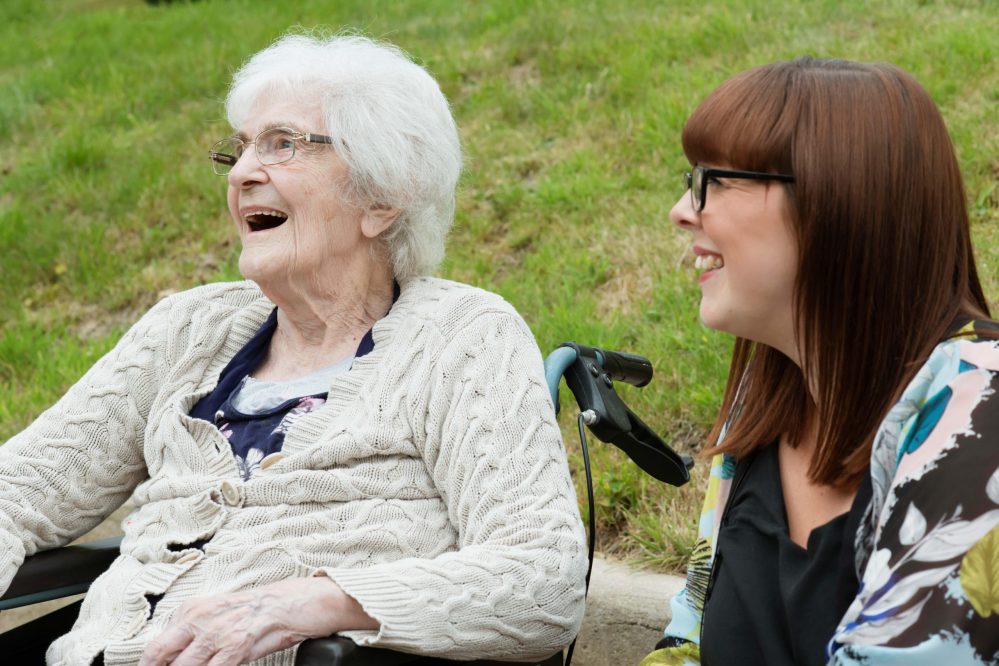
STARTING this month, over 600,000 pensioners across Wales will see their State Pensions rise by up to £470 annually, following the UK Government’s adherence to the ‘triple lock’ policy. This policy ensures that pensions increase each year by the highest of average earnings growth, inflation, or a minimum of 2.5%.
Government’s Position
The UK Government has emphasized its commitment to supporting pensioners through the triple lock. In a recent statement, it was noted that this commitment would result in the State Pension increasing by up to £1,900 over the course of the current Parliament.
Opposition and Think Tank Critiques
However, the policy has faced criticism from various quarters. The Liberal Democrats have raised concerns about the real impact of the pension increase, pointing out that due to the freezing of income tax thresholds, a significant portion of the pension rise could be offset by increased tax liabilities. They estimate that a typical basic rate tax-paying pensioner might see 77% of the pension increase negated by these tax measures.
Additionally, the Institute for Fiscal Studies (IFS) has questioned the sustainability of the triple lock mechanism. They argue that while the policy aims to protect pensioners’ incomes, it may not be the most efficient approach and could lead to unpredictable fiscal burdens.
Pensions Minister’s Stance
Torsten Bell, the newly appointed Pensions Minister, has previously described the triple lock as “rubbish” and advocated for its replacement with a system that aligns state pension increases with benefits for jobseekers and the long-term sick. Despite his past remarks, recent reports indicate that he is now “fully committed” to maintaining the triple lock.
Economic Implications
Financial experts have also highlighted potential unintended consequences of the pension increase. The freezing of personal tax allowances means that some pensioners may find themselves pushed into higher tax brackets, thereby reducing the net benefit of the pension rise. This situation underscores the complex interplay between pension policies and tax regulations.
In summary, while the increase in State Pensions is a welcome development for many Welsh pensioners, it has sparked a broader debate about the effectiveness and sustainability of the triple lock policy, as well as its interaction with the broader tax system.
Crime
Over 120 Carmarthenshire people identified as ‘money mules’ in fraud probe
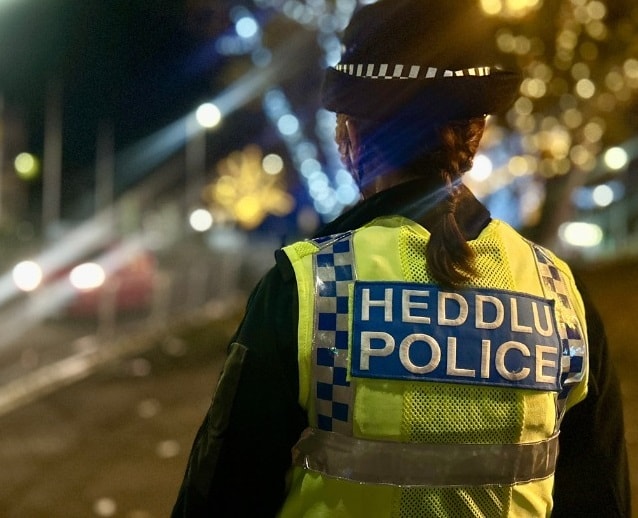
More than 120 people in Carmarthenshire, mostly living in the Llanelli area have handed over their personal bank details to criminals involved in money laundering in exchange for financial gifts.
Economic Crime Team officers from Dyfed-Powys Police identified the individuals as part of an ongoing criminal investigation and issued notices advising them to stop the activity immediately or face prosecution.
Throughout February, the team visited people who had been linked with a suspected fraudster, as part of Operation Henhouse – a month-long nationwide clampdown on fraud offences.
On speaking to those involved, officers learned how the individuals opened online bank accounts using their personal information and identification and gave their account login details to criminals in return for cash, who then used their bank accounts to launder money obtained through crime.
The team offered safeguarding advice and warned them about the dangers of opening bank accounts to be used by someone else for criminal activity.
Many were unaware of the implications of what they had done and thought it was an easy way to make some money. Some were given financial gifts ranging from £50 to £200, while others were promised money but did not receive it.
Dyfed-Powys Police Fraud Investigator Sian Stevens said: “Through intelligence, we were made aware of a fraudster who recruited a number of people in the Llanelli area to open bank accounts, which were then subsequently used for money laundering purposes.
“The Economic Crime Team visited over 120 individuals in February to explain that they had been used as a money mule – this is someone, who has allowed their bank account to be used to send criminal money. We issued them with cease and desist notice to interrupt any further fraud by making sure they were aware what they were doing was a criminal activity.
“Many of the people were linked to each other. Some were family members or in the same friendship groups, ranging from young adults to pensioners. The accounts had been opened as a direct or indirect interaction with the fraudster.
“For example, there were some instances where an individual opened a bank account after contact with the fraudster and then went on to tell their friends, ‘you can earn £50 if you open up a bank account and give the details to this person’ and so on. That was just one of many examples how the fraudster managed to obtain personal bank details.”
Dyfed-Powys Police Economic Crime Team Manager Paul Callard said: “People fall victim to fraud every day and the impact on victims can be devastating, both financially and emotionally.
“They can be taken advantage of by criminals and encouraged to allow their accounts to be used. People should be very careful about who they provide their personal information to.
“We will not tolerate fraudulent activity and will look to tackle criminals at every opportunity.”
How to avoid becoming a victim of fraud
- Always use the ABC of scam awareness. Never Assume or Believe a caller, email or text is genuine. Always Confirm by contacting a trusted relative, friend, your bank’s fraud department or the police to check it is genuine.
- Remember the police will never call you asking you to assist with an investigation by withdrawing cash for them to collect, or requesting to collect your bank card. If you receive a call purporting to be from the police and are unsure it is genuine, ring them back via 101 using a different telephone.
- Avoid clicking on links in emails and text messages from unknown sources, as they are liable to be a scam.
- Always use a strong and separate password for your email address by using three random words.
Do you know what will happen if you are caught allowing criminals to use your bank accounts to money launder?




Community
Pembrokeshire projects are building success
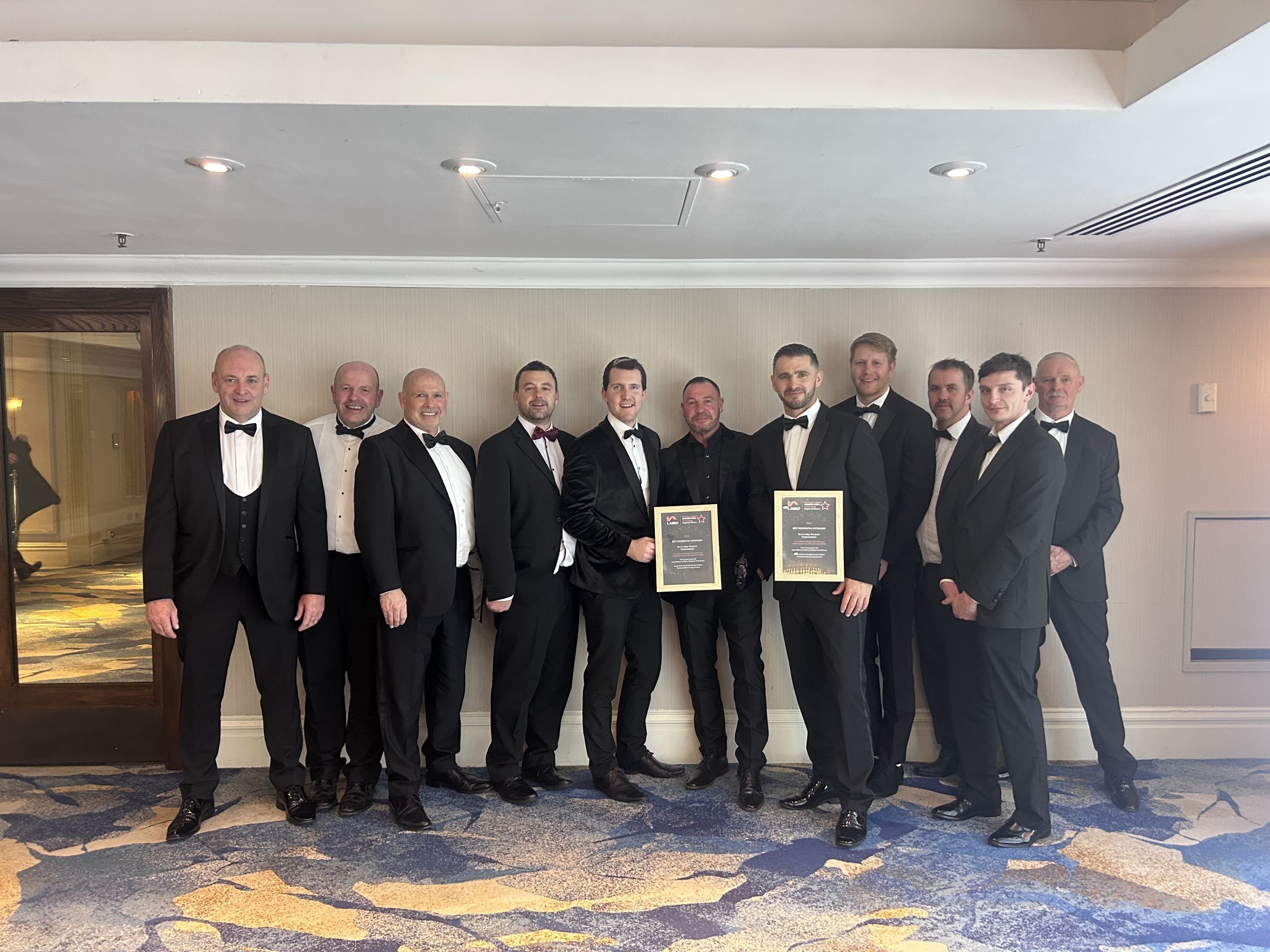
PEMBROKESHIRE County Council’s Building Control Team is congratulating local building and design projects for success in the LABC Building Excellence Awards 2024.
The LABC Building Excellence Awards are the largest business to business awards in the building control sector.
They celebrate buildings and design teams that have overcome the challenges of complex technical and construction issues and put the spotlight on innovative and creative building work.

In Pembrokeshire, D & O Construction Ltd, Julian Bishop Architect, Redstone Architecture and AB Rogers & Son Ltd, Hayston Development & Planning Ltd all achieved success on some high profile local projects.
In the Regional LABC Building Excellence Awards 2024, Berry Lodge, Newport won the Best Residential Extension in Wales prize with work carried out by D & O Construction Ltd and with agents Julian Bishop Architect and Redstone Architecture.
Highly Commended was the development at Plas Y Castell, Llawhaden, carried out by AB Rogers & Son Ltd and Hayston Development & Planning Ltd.
The Berry Lodge development then went forward to the Grand Finals at Grovesnor House in London where the top projects across the UK were celebrated.

Council Building Control Manager Sam Goodwin said: “Building Control is delighted to work on these projects which highlight the skill and innovation of developers locally.
“Pembrokeshire County Council Building Control is proud to be part of LABC Awards. The Local Authority Building Control (LABC) awards were set up to celebrate excellence achieved through high building standards, technical innovation and sustainable designs.
“The Awards are an opportunity for the industry to celebrate good building practice and winners demonstrate how positive working relationships with local Council building control teams achieve high quality, sustainable buildings.
“The awards are unique because they recognise how this cooperation improves building standards and professionalism across the industry and it is great to see local contractors, agents and designers within Pembrokeshire receive recognition in achieving these standards.”
If you would like to contact Building Control at Pembrokeshire County Council, please contact Building Control via the website www.pembrokeshire.gov.uk/building-control or alternatively contact 01437 764551
-

 Business5 days ago
Business5 days agoSpaceX eyes Milford Haven for new UK facility
-
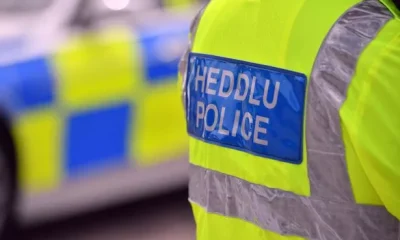
 Crime6 days ago
Crime6 days agoPembrokeshire farm worker accused of threatening to burn employer’s farm
-
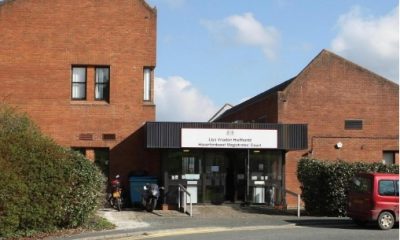
 Crime5 days ago
Crime5 days ago‘Yeah but no but’ insult to female officer lands Monkton man with court fine
-
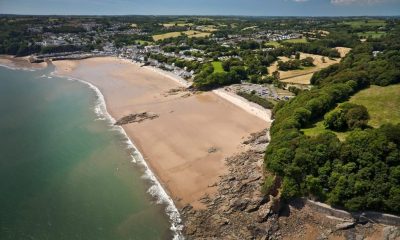
 Crime7 days ago
Crime7 days agoPembrokeshire beach dog ban enforcement changes expected
-

 Features5 days ago
Features5 days ago‘We weren’t wild. We were unprotected’: A generation groomed and forgotten
-

 Community7 days ago
Community7 days agoSpectacular evening of music at Ysgol Greenhill
-

 Crime5 days ago
Crime5 days agoLeaked messages reveal shocking culture at HMP Parc amid misconduct probe
-

 Politics6 days ago
Politics6 days agoProbe into ‘escalating’ horse fly-grazing in Pembrokeshire








